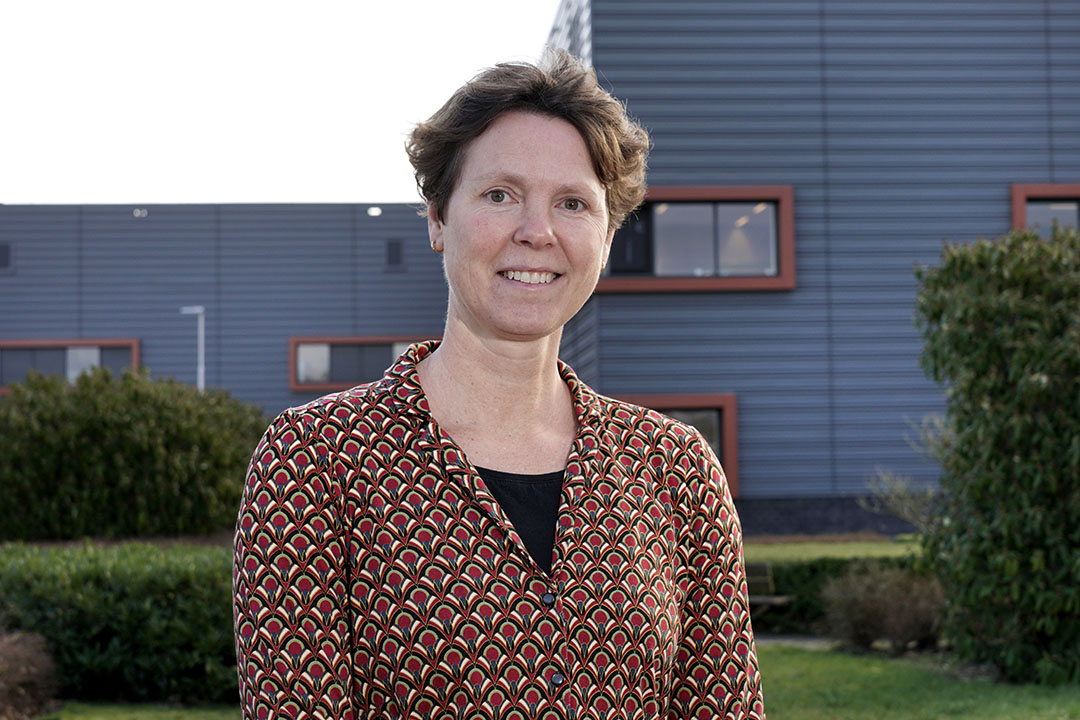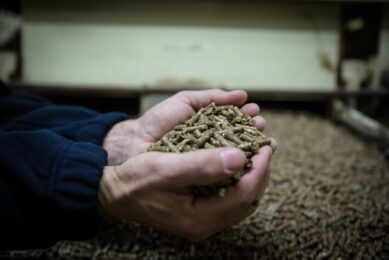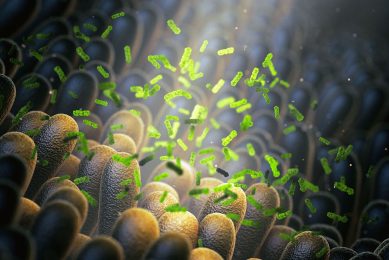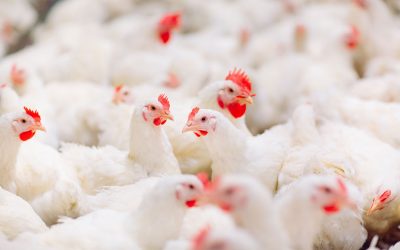Virologist Nancy Beerens – AI still unpredictable

“The way in which the H5N8 avian flu virus has manifested itself in the first quarter of 2020 in Central and Eastern Europe does not meet expectations,” says virologist Nancy Beerens of the Wageningen Bioveterinary Research institute.
Nancy Beerens enters the room with a pager in her hand. She apologises: “if I get a message, I need to leave immediately.” She has a 24-hour shift, which means she can always be called if samples come in that need to be tested for notifiable animal diseases, such as Avian flu, African swine fever or foot-and-mouth disease. Beerens is head of the national reference laboratory in the Netherlands for Avian Influenza and Newcastle Disease at Wageningen Bioveterinary Research (WBVR). WBVR tests 7,000 bird samples annually for the prevalence of the avian flu virus. WBVR also performs risk analyses on developments regarding avian flu for the Dutch ministry of Agriculture.
 Profile
Profile
Nancy Beerens (45) is a virologist and head of the national reference laboratory for Avian Influenza and Newcastle Disease at Wageningen Bioveterinary Research (WBVR). She is responsible for all diagnostics regarding these animal diseases. WBVR is ready 24/7 to conduct diagnostics of notifiable animal diseases, such as avian flu. Poultry farmers can send samples to the WBVR under the early warning programme. WBVR also tests dead wild birds that have been found in clusters of 3 or more. Confirmation and subtyping tests are also conducted when avian flu is determined through the regular monitoring programme, based on serological research.
Multiple outbreaks of H5N8
Beerens is a part of the Expert Group Animal Diseases, that advises the government on animal disease threats. At the beginning of February 2020, this group indicated that the risk of avian flu was ‘slightly increased’ in comparison to the month before. This conclusion was made after multiple outbreaks of highly pathogenic H5N8 were reported from Central and Eastern Europe, which led to a housing order for all poultry in the Netherlands. “This is mainly because we do not understand the mechanism behind the virus’ spread,” says Beerens. “The virus made large jumps from Poland to southern Germany and we really do not understand how that is possible.”
When talking about the current H5N8 virus, do you go by the information affected countries provide or do you have sequences of the viruses found so far?
“Every country has its own national reference laboratory that examines the virus. The viral genome sequences are shared, which is important for preparation and enables us to check whether the current diagnostics are viable for the circulating virus. In the Netherlands, we have a new technique at our disposal, which enables us to quickly determine the virus’ complete genome sequence. We can use that to look at the virus’ ancestors, but also at how the virus has spread, comparing the relation between the viruses that have been found at various other places. Other countries in western Europe can do the same, but in Poland and its neighbouring countries, these techniques are not as easily accessible. Some countries do send samples to the European reference laboratory. I have seen the genome of 4 outbreaks: 2 from Poland, 1 from the Czech Republic and 1 from Germany.”
Bird flu from H5N8 that’s something the Netherlands encountered before. What do we know about this virus and is it connected to the virus we saw years ago?
“It does look like the viruses we found in the Netherlands in 2016 and 2017. However, several genome segments have altered. It mostly looks like viruses that were found in Africa, which is quite surprising. Until now, avian flu viruses came to Europe from Siberia during wild bird migrations. Now, we see that this virus has been found before, in Africa. There are however no high-risk birds that come to Europe from Africa in this time of year. So, we suppose, based on our knowledge of the routes that wild birds take, a whole cycle preceded this and that the virus first came from Africa to Siberia. It then came to Europe during the autumn migration. The surprising thing is that you only see it in Central Europe and fairly late in the year.”
Does this mean that the virus has been in Europe since the autumn migration or did it enter later?
“That is difficult to say. It could be that the wild birds have built up a certain type of immunity, which then leads to less wild bird being infected. If this is the case, then the virus may have been there longer.”
But then something must have changed, since the virus has flared up in so many countries?
“That is very notable, and we cannot explain it. We would have to know much more about wild birds: how they fly and behave and how their immunity works. But also which birds eventually bring the virus to the poultry farms? Are they the same birds that carry the virus to Europe? You can also imagine that the virus travels with migratory birds and only multiplies and spreads in the local population later. These are all theories though. We just simply don’t know.”
Does western Europe run a risk when wild birds start their spring migration?
“As long as cold weather is not predicted in Poland, we expect the risk to remain low. The infected birds do not pass over the Netherlands on their way back to Siberia, assuming that the virus is not here already. When frost kicks in the birds will fly, but even then, you expect this to be a short distance, based on the information shared by bird research organisations such as Sovon. The birds fly along the frost line. However, the virus has also been found in southern Germany. It jumped quite a distance and we don’t understand how this can happen. The virus could have been spread through something other than wild birds. It has been found in a hobby farmer’s flock. He may have bought new birds from somewhere in Poland, Germany is still investigating this theory. I am very curious about the results, but it is difficult in the case of hobby farmers. Another possibility is that the virus was much more widespread than we thought and that it was already there to begin with. That is why we indicated in our most recent risk analyses that the risk had slightly increased. We don’t fully understand the means by which virus was introduced”
H5N8 virus does not meet our expectations”
Better safe than sorry?
“That is probably why the government decided to issue a housing order up until further notice. Until we have more knowledge about how the virus was introduced there.”
Since the new year, the H5N8 virus has been found in seven countries. What do we know about how this virus spreads?
“We do not know much about it regarding genetics, because we only know the genome of four outbreaks. Contacts are however being traced. The farms that experience outbreaks are somewhat scattered. Sometimes, there is a significant amount of time between two outbreaks, as was the case in the Czech Republic. So, we don’t think that transmission between farms has occurred. We cannot prove this with genetics though.”
This virus surprises again, to a certain extent. Are we acquiring more knowledge about avian flu, or is it still a surprise every time?
“The previous epidemics did meet a certain pattern, the virus was introduced by migratory wild birds from Siberia and its surroundings. This virus does not meet our expectations, this is a new scenario. At the same time, it is still relatively far away, the outbreak in Germany may have been an exception. At the moment, the Netherlands is the only country in Europe that has a mandatory housing order. Germany has not taken this step yet.”
 The who’s who in the feed industry talk to All About Feed…
The who’s who in the feed industry talk to All About Feed…
click here for more interviews
Does the number of samples you receive indicate increased vigilance?
“We always receive more samples within the early warning programme (which enables poultry farmers or their vets to send samples directly, without the intervention of the Netherlands Food and Consumer Product Safety Authority) when avian flu has people’s attention. I cannot say exactly how many samples we have received, because we report quarterly. However, people are more concerned. We had several suspicions a while ago, so it remains tense. But the earlier we detect it, the better. That is why we work in 24-hour shifts. Outbreaks during previous epidemics in the Netherlands were caused by separate introductions from wild birds. Transmission between farms did not occur, which is due to our fast diagnostics and the measures taken accordingly.”
With the spring migration H5N8 may return to Siberia, which in the past, has been the transfer spot for the viruses that return to Europe. Should we be worried next autumn?
“Not for this virus specifically. I think there is a risk every autumn. All sorts of migratory birds encounter each other on their breeding grounds, and we see new types of viruses emerging there every single time. There are many subtypes of avian flu in wild birds and we can’t do much about that. New viruses may come our way every year. I do think the situation has changed for the Netherlands in that sense . Previously, on poultry farms, there was a risk of mutation of the avian flu virus from low to highly pathogenic. Now, I think that every year sees an increased risk of highly pathogenic avian flu during the autumn migration of wild birds.”







